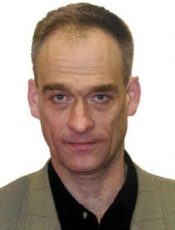The United Arab Emirates has deployed the AN/TPY-2 radar along with its THAAD battery operating near the coast. In 2011, the UAE became the first international customer to procure the advanced missile defense system designed to intercept short-range, medium-range, and some intermediate-range ballistic missiles from the United States. The initial contract included 48 missiles, 9 transporter erector launchers (TELs) and two radars.
The THAAD site features four hardened munitions shelters, a support area and six prepared firing positions. The system is part of multilayered missile defense, including the Patriot PAC-3s and Triad I-Hawk batteries, created to defend the national territory of the emirates. The UAE air defense assets will be protected by Russian-S1 – a combined short to medium range surface-to-air missile and anti-aircraft artillery weapon system designed to provide point air defence of military/industrial/administrative installations against aircraft, helicopters, precision munitions, cruise missiles and UAVs. The system offers additional protection to air defence units from enemy air attacks employing precision munitions, especially at the low to extremely low ranges. The list of targets includes high velocity vehicles flying at over 3600 km/h, stealth aircraft and drones.
The armament consists of 12 surface-to-air guided missiles and two 30 mm automatic guns. With the operational range of 30 km (18.6 mi), the reaction time is 4–6 seconds. The system also has a limited capability against ground targets and fires armor-piercing projectiles. While going through tests, the Pantsir has demonstrated the capability to shoot down cruise missiles at low altitude. Targets moving as fast as 1,000 metres per second (3,300 ft/s; Mach 2.9) were also hit.
The system has already hit several ballistic missiles in Yemen. Thanks to the Pantsir (about 50 systems in the inventory), the UAE has become the first state in the region to create a full-fledged multi-layered air and missile defense, with the AN/TPY 2 radars reaching operational status in late 2016. The same radars are deployed by the US armed forces in Guam and South Korea.
In Russia, the Pantsir is used for last ditch anti-missile and anti-aircraft defense to protect such high-value assets as the most capable S-400 long range air defense systems. In the UAE, the THAAD’s mission is to hit high-altitude hard-to-hit targets flying along a complicated trajectory.
Without the Russian missile-gun system, the THAAD would be unprotected against precision-guided air attacks from low and extreme low altitudes. It should be noted that the Pantsir is unique – it has no analogues the world.
About 5,000 US military personnel are stationed in the UAE, hosted there under a 1994 U.S.-UAE defense cooperation agreement. The airbase located in Dahfra hosts around 3,500 U.S. military personnel and is the only foreign base with F-22s. It also hosts Global Hawk drones and advanced offensive hardware. Dahfra provides an air-warfare training center operated by the UAE and the US Air Force, which seeks to train US pilots in missions they cannot simulate in the United States. The UAE – the country which has excellent relations with Russia – also hosts other Western forces, including those of France. All these Western forces and assets are protected by the Russian air defense systems.
It’s not the only place in the Middle East (ME) where Pantsir systems are in service. The Pantsir-S2 air defense system was deployed to Syria in February 2016. The Pantsir-S1 variant is supplied to the Syrian army.
The fact that Russian weapons protect the US military and its NATO allies deployed in the UAE appears to be symbolic against the background of improving Russia-US relations. The US President has said he would welcome cooperation between America and Russia in the fight against the Islamic State group. Russia and Turkey – a NATO member – are delivering joint air strikes against Islamic State militants in the Al Bab area. Both countries are partners working together in an effort to facilitate the Astana peace process. Turkey hosts US Air Force assets based in Incirlik.
Russian Foreign Minister Sergey Lavrov said Moscow is ready to discuss ‘safe zones’ in Syria with the new US administration. So do Saudi Arabia and the UAE. The ME regional scenarios are going through rapid changes. The next round of United Nations-based peace talks on Syria has been scheduled for February 20.
Russia is the leading actor in the international effort. It’s not known what will happen next in Syria and elsewhere in the Middle East. It’s impossible to predict anything as the events unfold at galloping pace. But there is a place in the volatile region where Russia-made weapons protect the lives of American servicemen to symbolize the possibility of cooperation – a scenario that may come reality tomorrow if US President Trump remain true to his words about the need to drastically change the US foreign policy and join Russia in the fight against the common enemy.









